As a dog owner, you might find yourself wondering, “Can my dog eat bread?” It’s a common question among pet lovers, and understanding the basics can help you make safe dietary choices for your furry friend. Bread is a staple food in many households, but not all foods that are safe for humans are safe for dogs. Let’s delve into the facts surrounding bread and canine consumption.
Is Bread Safe for Dogs?
Generally, bread can be safe for dogs to eat in moderation. Like many human foods, it’s crucial to consider a few factors before offering bread to your pet:
- The type of bread matters. Most plain white or whole grain bread is safe for dogs.
- Avoid bread containing toxic ingredients such as garlic, onions, or raisins.
- Pay attention to your dog’s dietary needs and weight. Bread can add extra calories.
Potential Benefits of Bread for Dogs
While bread shouldn’t be a primary part of your dog’s diet, it can have some benefits:
- Fiber source: Whole grain bread can provide fiber, aiding digestion.
- Treats for training: Small pieces of bread can work wonderfully as a training treat.
- Mixing medication: If your dog dislikes their medication, hiding it in bread can be helpful.
Possible Risks of Feeding Bread to Dogs
Despite the benefits, there are a few risks associated with feeding bread to dogs:
- Weight gain: Excessive bread can lead to weight gain, particularly if your dog is less active.
- Allergies: Some dogs may have allergies to wheat, making bread a poor choice for them.
- Digestive issues: Large amounts of bread could cause stomach discomfort or gas.
How Much Bread Can Dogs Eat?
Moderation is key! For most dogs, a small amount of bread—such as a piece the size of your thumb—is usually safe. It’s essential to avoid giving them bread on a daily basis. If you do decide to share some bread with your dog, make sure it’s plain and free from harmful additives.
Types of Bread to Avoid
While plain bread can be fine for dogs, there are specific types you should steer clear of:
- Bread with nuts (especially macadamia nuts)
- Sourdough bread (can be too acidic)
- Sweet breads (like cinnamon rolls or pastries containing sugar)
- Garlic or onion bread (toxic to dogs)
Alternative Carbohydrate Sources
If you’re looking for alternative carbohydrate sources for your dog, consider:
- Brown rice
- Sweet potatoes
- Oatmeal
These options can provide nutritious benefits without the risks associated with bread.
Tips for Introducing Bread
If you decide to give bread a try, here are some tips:
- Start with small pieces to see how your dog reacts.
- Monitor your dog for any signs of allergies or discomfort.
- Always check the ingredient label to avoid harmful components.
Remember to consult your veterinarian for personalized advice tailored to your dog’s specific health needs, particularly if they have underlying conditions.
Feeding your dog should always come with caution. For more detailed information regarding pet nutrition, you might find these resources helpful: American Kennel Club and PetMD.
Ultimately, bread can be a special treat for dogs when offered in moderation and with the right considerations. Keep your dog’s health and wellbeing in mind, and enjoy treating them to new experiences!
The Nutritional Value of Bread for Dogs
If you’re a dog owner, you might find yourself asking, “Can my dog eat bread?” It’s a common question, as many pet owners are curious about what human foods are safe to share with their furry friends. Understanding the nutritional value of bread for dogs is crucial for making informed decisions when it comes to your pet’s diet.
The Nutritional Components of Bread
Bread is primarily made from a few basic ingredients: flour, water, yeast, and salt. These components create a carbohydrate-rich food that can affect dogs differently. Here’s a breakdown of key nutritional elements found in most types of bread:
- Carbohydrates: The main source of energy in bread. While dogs do need some carbs, they don’t require as many as humans do.
- Protein: Bread contains a small amount of protein, which can contribute to their daily intake.
- Fats: Most plain bread is low in fat, which can be advantageous for dogs needing to manage their weight.
- Vitamins and Minerals: Bread contains small amounts of various vitamins and minerals but is not a primary source. Whole-grain or fortified breads may provide more nutrients.
Benefits of Bread for Dogs
There can be some benefits to feeding your dog bread, but moderation is key. Here’s why you might consider offering bread as an occasional treat:
- Stomach Settler: Some dogs may benefit from a small piece of plain bread during digestive upset as it can help absorb excess moisture.
- Treat Disguise: If your dog needs to take medication, wrapping it in a small amount of bread can help them swallow it more easily.
- Bonding Moment: Sharing a small treat can enhance the bond between you and your dog, creating a sense of trust and love.
Potential Risks of Feeding Bread to Dogs
While there can be some benefits, there are also risks involved when feeding your dog bread:
- Weight Gain: Bread is high in calories, so feeding it frequently can lead to obesity.
- Gluten Sensitivity: Some dogs may have a sensitivity to gluten, which is found in most breads. Symptoms can include gastrointestinal distress.
- Additives and Fillers: Many commercial breads contain ingredients like sugar, garlic, or raisins that are toxic to dogs. Always choose plain, unseasoned bread for your pet.
How Much Bread Can You Safely Give Your Dog?
If you decide to give your furry friend some bread, moderation is vital. A small piece of plain, white or whole-grain bread once in a while is acceptable for most dogs. However, it should never replace a balanced diet specifically designed for canine nutritional needs.
| Type of Bread | Calories per Slice | Recommended Serving Size |
|---|---|---|
| White Bread | 80 | 1 small slice |
| Whole Grain Bread | 70 | 1 small slice |
| Sourdough | 90 | 1 small slice |
Alternatives to Bread for Dogs
If you’re looking for healthy treats that are more beneficial than bread, consider these alternatives:
- Carrots: Crunchy and low in calories, carrots make an excellent snack.
- Apple Slices: These can satisfy your dog’s sweet tooth while providing vitamins A and C.
- Peanut Butter: A favorite for many dogs, just be sure it’s free from xylitol, a harmful sweetener.
Understanding whether bread is suitable for your canine companion is essential for their well-being. As always, consult with your veterinarian before making significant changes to your dog’s diet. They can provide personalized advice based on your dog’s health needs.
For more detailed information about pet nutrition, you can refer to AVMA and ASPCA’s Nutrition Tips.
Safe Bread Options: What Types of Bread Can Dogs Enjoy?
As a dog owner, you may sometimes wonder whether it’s safe to share your meals with your furry friend. One common question is, “Can dogs eat bread?” While many types of bread are safe for dogs to consume in moderation, not all bread varieties are created equal. Let’s explore safe options for your pup and what you should keep in mind when introducing bread into their diet.
First, you want to consider the ingredients in the bread you are feeding your dog. Some types of bread may contain harmful ingredients that are toxic to dogs. Always read labels to ensure that any bread you share with your pet does not include xylitol, raisins, or chocolate, as these ingredients can be dangerous.
Types of Bread Dogs Can Enjoy
The following list includes some safe bread options for dogs:
- White Bread: In moderation, plain white bread is generally safe for dogs. It can be a treat or used as a vehicle for medication.
- Whole Wheat Bread: Whole wheat bread offers more fiber than white bread and can be a healthy choice for dogs. Just make sure there are no added sugars or harmful ingredients.
- Rye Bread: Rye bread is safe as long as it doesn’t contain any seeds that could obstruct your dog’s digestive system.
- Oat Bread: This type of bread is often whole grain and can be enjoyed by dogs who aren’t allergic to oats. Oats are safe and provide several nutritional benefits.
- Gluten-Free Bread: If your dog has a gluten sensitivity, opt for gluten-free bread made from alternative grains like rice or almond flour.
Bread to Avoid
While there are safe options out there, it’s essential to avoid certain types of bread that could pose a health risk to your dog:
- Garlic Bread: Garlic is toxic to dogs and can cause a range of health issues. Avoid sharing garlic bread.
- Onion Bread: Similar to garlic, onions can be harmful to dogs. Steer clear of any bread containing onion.
- Breads Containing Nuts: Some nuts, like macadamia nuts, are toxic to dogs. Always check the ingredients.
Serving Suggestions
Once you’ve selected a safe bread option, consider how to serve it to your dog. Here are some ideas:
- Cut into Small Pieces: Make sure to cut the bread into bite-sized pieces to prevent choking.
- Use as a Reward: Use small amounts of bread as a reward for good behavior during training.
- Add Toppings: You can add a small amount of peanut butter (make sure it’s xylitol-free), or a spreadable dog-safe food to make it a delightful treat.
It’s crucial to keep portions small. The bread should not replace a balanced diet. If your dog is overweight or has specific dietary restrictions, consult your veterinarian before introducing any new foods.
Benefits of Bread for Dogs
There are a few potential benefits of feeding your dog bread:
- Carbohydrates: Bread can provide carbohydrates, which may give your dog a boost of energy.
- Fiber Content: Whole grain options can offer additional fiber, which helps with digestion.
Remember, the key to sharing your food with your pet is moderation. A small piece of bread can be a nice treat, but too much can lead to weight gain and other digestive issues.
Consult Your Vet
If in doubt, always consult with your veterinarian before making any changes to your dog’s diet. They can provide personalized advice based on your dog’s health needs. If you would like to read more about dog nutrition, you can explore AKC’s Guide on Dog Nutrition or check out American Humane’s list of safe foods.
Your dog’s health and safety are always the top priority. When you’re mindful about what you feed them, you can enjoy special moments without the worry. In the end, sharing a small piece of bread with your dog can strengthen your bond and become a delightful addition to their treat options!
Potential Risks: When Bread Might Be Harmful to Your Dog
Many dog owners often wonder about the safety of sharing their food with their pets, especially when it comes to bread. While bread may seem harmless, it can pose certain risks to your dog’s health. Understanding when bread might be harmful can help you make informed choices for your furry friend.
First, it’s important to know that not all breads are created equal. Some types of bread contain ingredients that can be harmful to dogs:
- Raisins and Grapes: Some breads, like certain fruit breads, can contain raisins or grapes, which are toxic to dogs.
- Seeds and Nuts: Bread that includes seeds or nuts can be harmful due to their high-fat content and potential choking hazard.
- Sugar and Artificial Sweeteners: Bread with added sugars or sweeteners, especially xylitol, should never be given to dogs. Xylitol is highly toxic and can lead to severe health issues.
Another consideration is the amount of bread you give your dog. Bread, while not toxic in small amounts, is not part of a dog’s natural diet. Feeding too much bread can lead to a variety of health problems:
- Obesity: Bread is high in carbohydrates, contributing to weight gain if given in excess.
- Digestive Issues: A sudden increase in carbohydrates can upset your dog’s stomach, causing symptoms like bloating, diarrhea, or constipation.
- Food Allergies: Some dogs may have allergies to wheat or gluten, leading to skin issues or gastrointestinal distress when eating bread.
Homemade breads often contain additional ingredients that can be harmful to dogs, such as garlic or onions, which should always be avoided. Even small amounts can lead to serious health problems. Avoid giving your dog the crust or the bread that has been cooked with these harmful ingredients.
If your dog manages to eat raw bread dough, it can be particularly dangerous. The yeast in the dough can expand in their stomach, causing painful bloating and potentially leading to a serious condition known as torsion. If your dog eats raw dough, you should seek veterinary attention immediately.
It’s also essential to consider your dog’s size and overall health. Smaller breeds are more susceptible to the adverse effects of bread compared to larger breeds. If you have a dog with preexisting health conditions like diabetes or pancreatitis, it’s best to avoid giving them bread altogether.
Here is a quick guide to what to watch out for:
| Type of Bread | Considerations |
|---|---|
| White Bread | Occasional treat; avoid if overweight. |
| Whole Wheat Bread | Better choice; monitor for grain allergies. |
| Raisin Bread | Avoid entirely; toxic to dogs. |
| Flavored or Specialty Breads | Check all ingredients; avoid harmful ones. |
If you still want to treat your dog with bread, consider healthier alternatives such as whole grain or gluten-free options. Always keep the serving size small, and introduce any new foods gradually into their diet. It’s a good idea to consult your veterinarian first to ensure you are making the right choices for your furry friend.
If you’re looking for more information on dog nutrition and safe treats, consider visiting the American Kennel Club or Dog Food Advisor.
Remember, keeping your dog healthy and happy is a top priority. Being mindful of what treats you offer, including bread, can help you avoid unnecessary health issues. Always err on the side of caution and prioritize your dog’s well-being when it comes to their diet.
Alternative Treats: Healthy Snacks for Dogs Beyond Bread
When it comes to feeding your dog, bread might not always be the best option. While many dogs can tolerate small amounts of plain bread, there are healthier alternative treats you can offer your furry friend. Exploring a variety of snacks not only satisfies their taste buds but also contributes to their overall health. Here are some nutritious snacks you can provide your dog along with details on their benefits.
Vegetables
Many dogs enjoy crunching on vegetables! Here are some dog-friendly options:
- Carrots: These are low in calories and high in fiber and vitamins. Carrots can help clean your dog’s teeth as they munch.
- Green Beans: Packed with vitamins and minerals, green beans are a great low-calorie snack for dogs. They’re also high in fiber, which can aid digestion.
- Sweet Potatoes: Rich in vitamins A, B6, and C, sweet potatoes are a favorite among dogs. You can bake or mash them as a treat.
Fruits
Fruits can make delightful and healthy snacks for dogs. Just be sure to remove seeds and pits.
- Apples: Sliced apples are great for dogs, as they provide vitamins A and C. Ensure you remove the seeds and core first.
- Blueberries: These small berries are rich in antioxidants and can be offered as a refreshing snack for your dog.
- Bananas: In moderation, bananas are high in potassium and can be a sweet treat.
Meat Treats
If your dog loves meat, you can offer them healthy alternatives that don’t come from processed sources.
- Chicken: Cooked, plain chicken breast can be cut into small pieces and used as a milder tasty treat for training.
- Turkey: Lean turkey is also a delicious option for dogs. It’s low in fat and high in protein.
- Salmon: Rich in omega-3 fatty acids, salmon oil can benefit your dog’s coat and skin. Be sure to cook it properly without any seasoning.
Commercial Dog Treats
There are also many store-bought dog treats that offer healthy options suited to your dog’s dietary needs. Look for treats that are:
- Grain-Free: If your dog has sensitivities, choose grain-free options made from ingredients like sweet potatoes or chickpeas.
- Made with Real Meat: Many premium brands will use identifiable meat sources as the first ingredient.
- High in Nutrients: Check the nutritional information on the packaging for calcium and vitamin inclusion.
Homemade Snacks
Creating snacks at home can be both fun and healthy for your dog. Here’s a simple recipe idea:
Peanut Butter and Pumpkin Treats
- 1 cup of pumpkin puree (not the spiced pie filling)
- 1/2 cup of peanut butter (make sure it doesn’t contain xylitol, as this is toxic to dogs)
- 2 cups of whole wheat flour
- 1 egg
- Mix all the ingredients and roll them into small balls or cut into shapes.
- Bake at 350°F (175°C) for about 20 minutes.
These snacks can be stored in an airtight container for an extended period.
| Snack Type | Health Benefits |
|---|---|
| Carrots | Rich in fiber and vitamins, good for dental health. |
| Apples | Vitamins A and C; good for overall health. |
| Chicken | Lean protein source, beneficial for muscle development. |
| Salmon | Packed with omega-3 fatty acids; good for coat health. |
By offering these nutritious snacks, you not only enrich your dog’s diet but also strengthen the bond you share. Keep in mind that any treat should be given in moderation, and you should always check for potential allergies or food sensitivities.
For more information on dog nutrition and healthy snacks, visit AKC or PetSafe.
Conclusion
To sum up, the question “Can dogs eat bread?” has a nuanced answer that requires careful consideration. While most dogs can safely consume plain bread in moderation, it’s essential to understand its nutritional value and the specific types of bread that are suitable for your furry friend. White bread offers minimal health benefits and may pose risks if consumed excessively, while whole-grain options can provide more fiber and nutrients.
However, not all breads are created equal. Avoid options with added ingredients like garlic, raisins, or other harmful additives that could jeopardize your dog’s health. It’s always wise to introduce new foods gradually, monitoring your pet for any negative reactions.
In addition to bread, there are plenty of healthier alternatives to treat your dog. Fruits like apples and blueberries or vegetables such as carrots and green beans can offer valuable nutrients without the potential downsides of bread. These options can also keep your dog happy and engaged.
Ultimately, understanding your dog’s individual dietary needs is crucial. If you ever have uncertainties, consulting your veterinarian can provide tailored guidance. Making informed choices about your dog’s diet fosters their health and happiness, ensuring they can enjoy both safe treats and a loving bond with you.

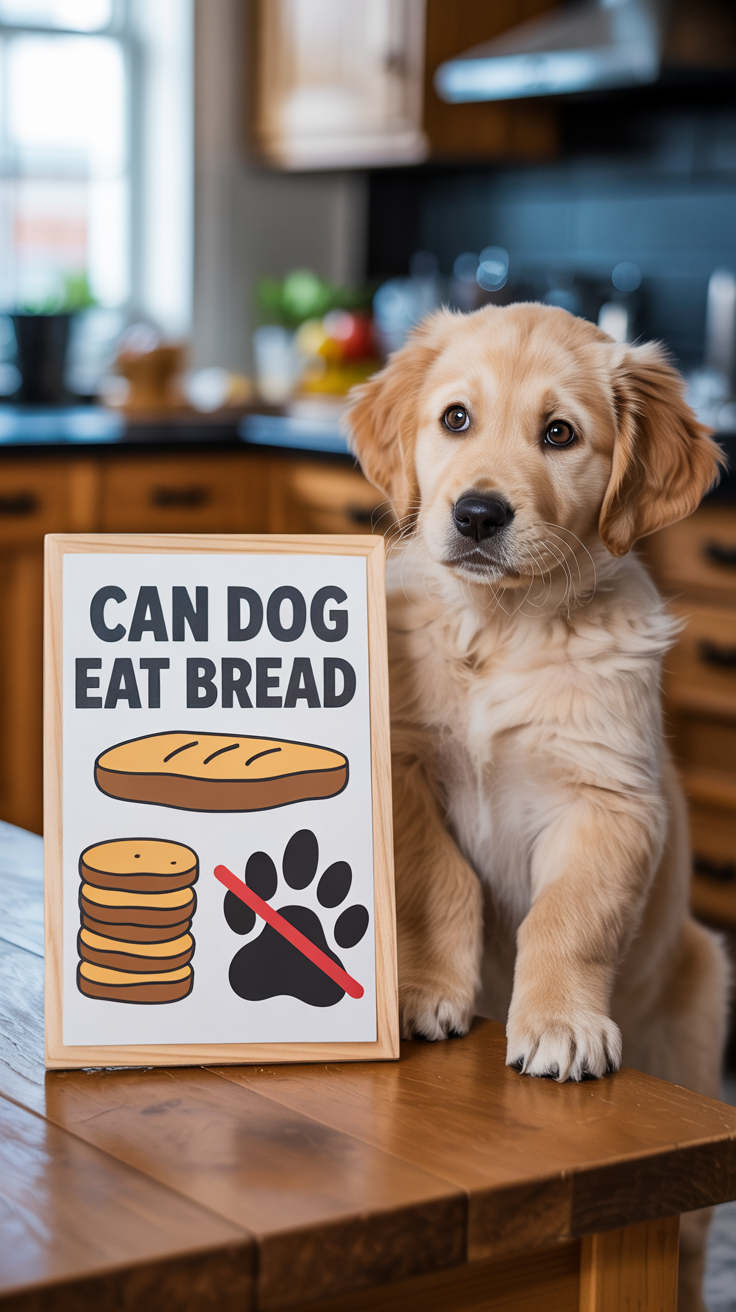

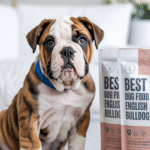
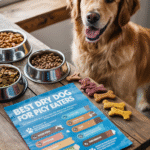
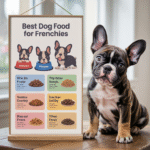
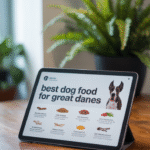
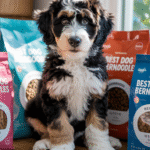
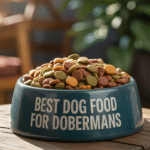
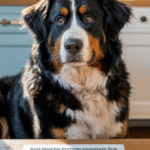
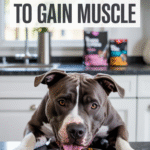
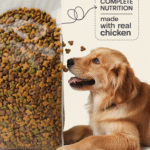
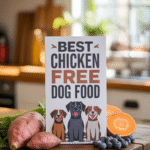

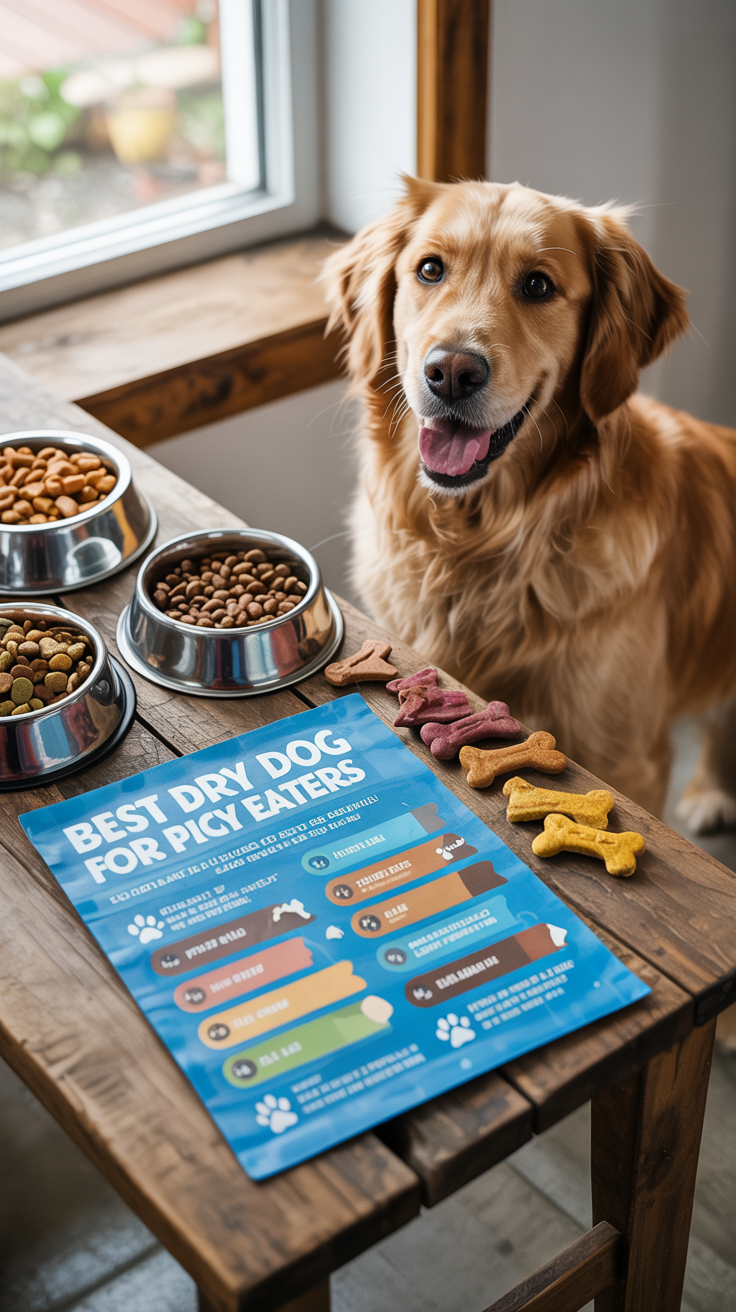
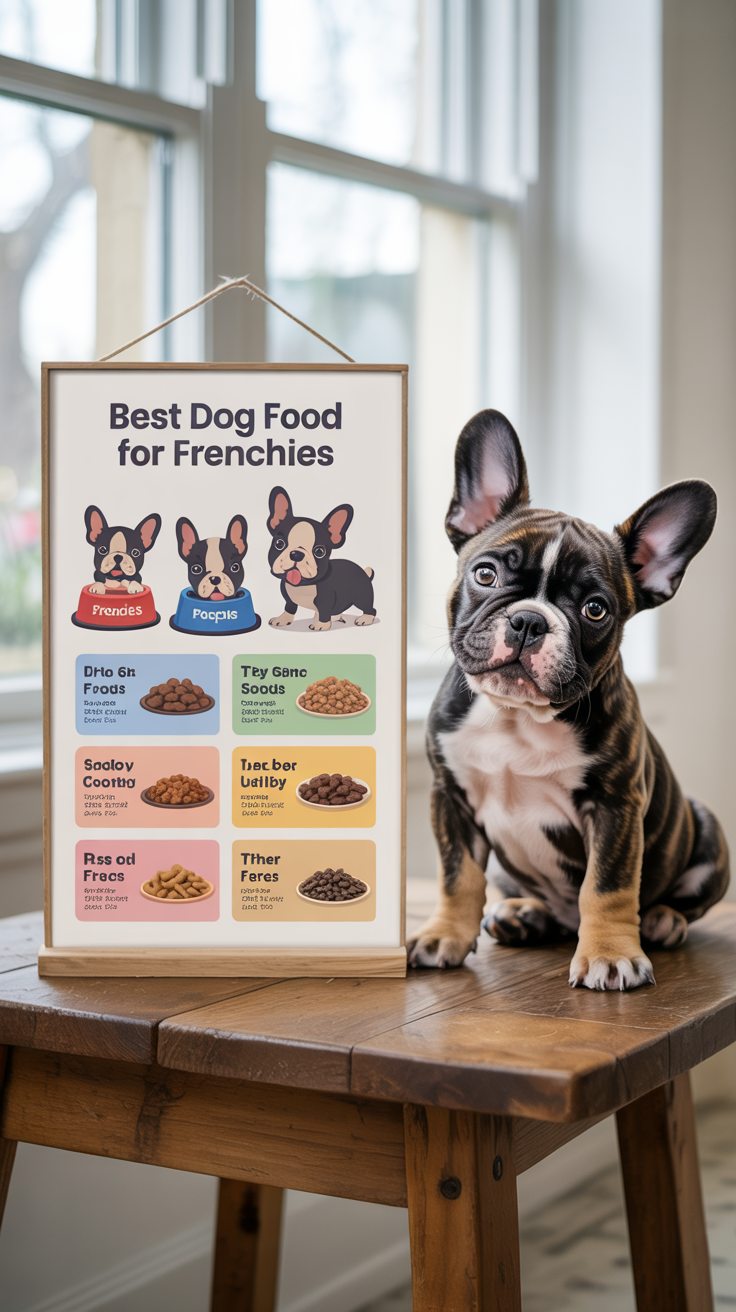
Leave a Reply